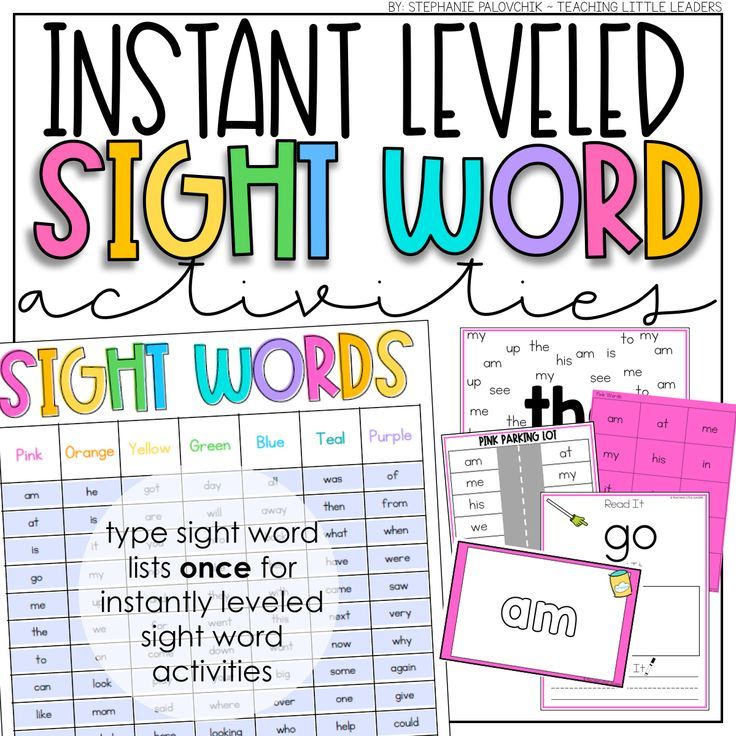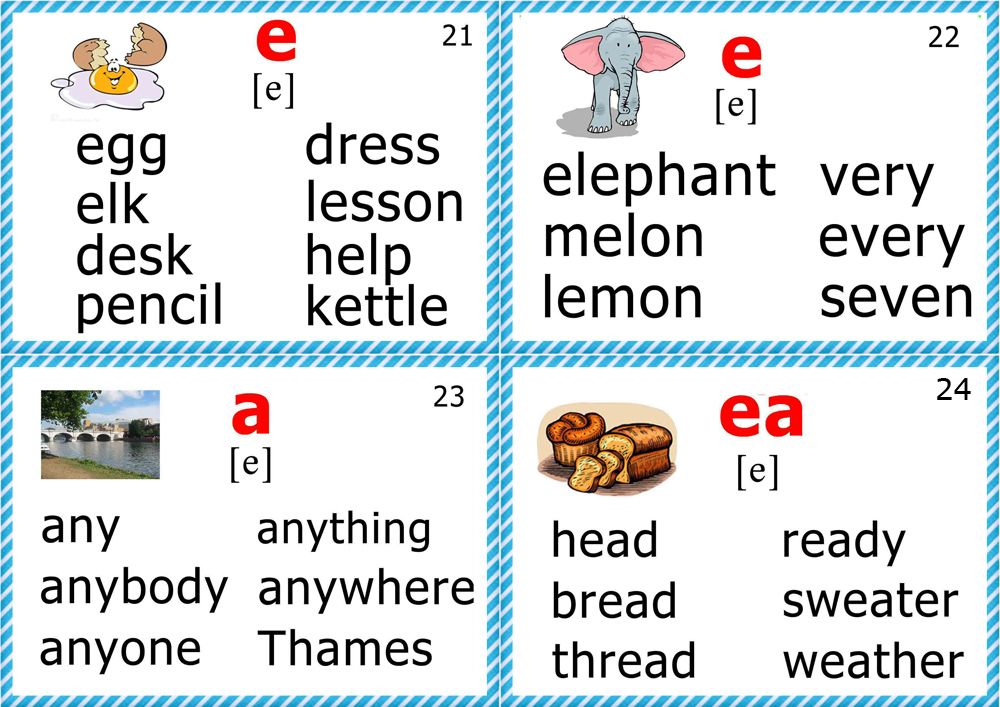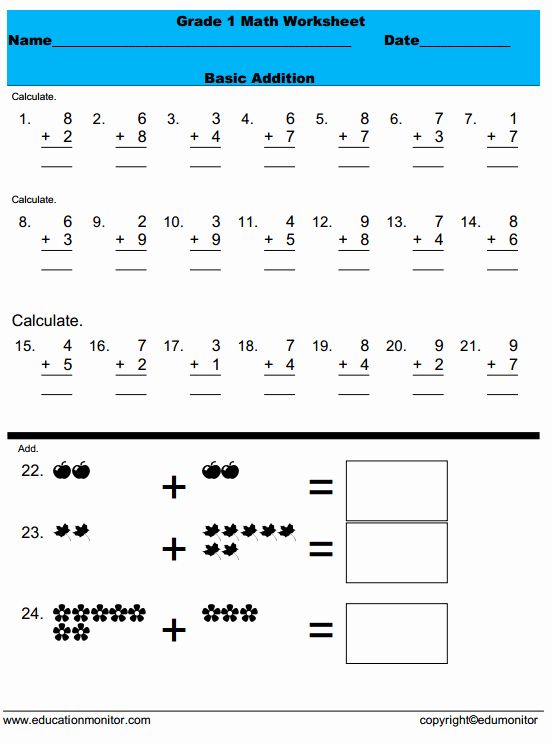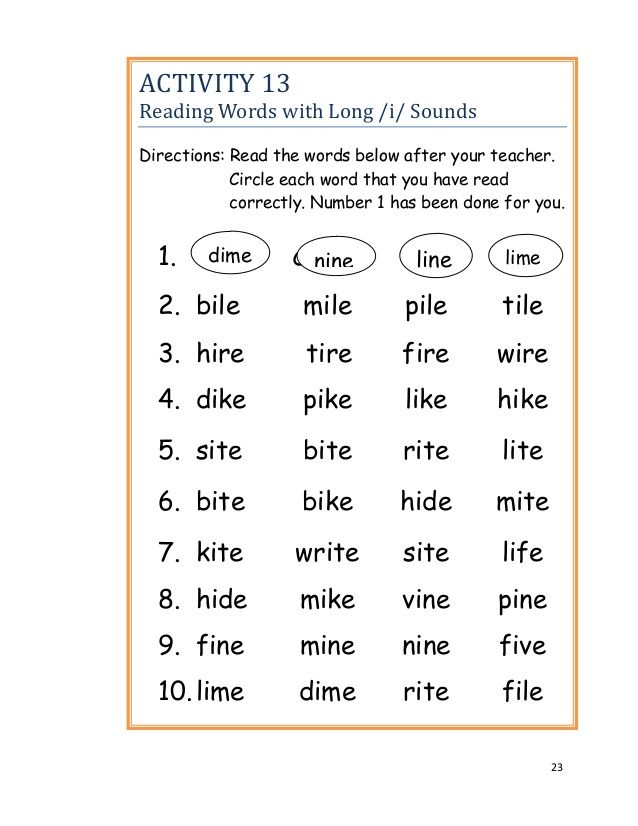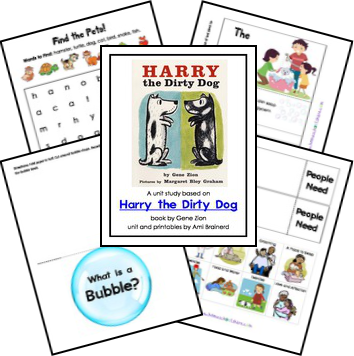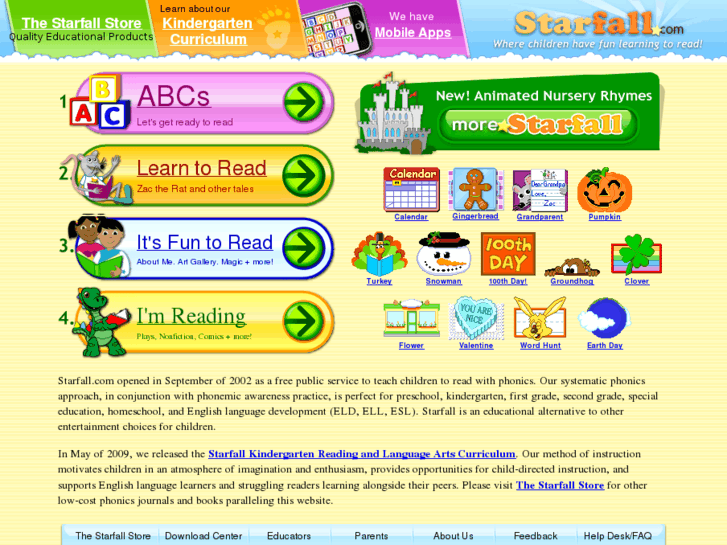What order to teach sight words
Sight Words for Kindergarten & Kids
No matter whether kindergarten children will be learning in person, online, or a hybrid of the two, parents and teachers are still focused on ensuring their emerging readers develop a love for reading while learning to read effectively and efficiently. One critical skill that children need in order to build solid foundational reading skills is sight word recognition.
What Are Sight Words?
When we teach children to read, we are basically helping them to crack a code. Children learn to hear and say the sounds of the alphabet and then how to blend those sounds to make words. These sounds usually follow basic spelling rules or phonetic principles, but there are some words that did not follow rules. These words are called sight words.
Most sight words cannot be decoded or sounded out, and they are also difficult to represent with a picture. As a result, children must learn to recognize these words automatically, or at first sight. Children who are able to quickly and instantly recognize sight words are more likely to become more fluent readers who read at a good speed because they are not stopping to try to decode every word. When children recognize sight words within three seconds, they are also more likely to comprehend what they are reading. Children who are able to instantly recognize sight words are more likely to be confident readers because over 50-70 percent of the general English text is made up of sight words.
There are several sight word lists for emerging readers. One list is called the Dolch Word List, created by E.W. Dolch in 1936. The list contains 220 of the most commonly used words that should be recognized by first sight. The list is divided by grade level from Pre-K through third grade, but many educators believe that these words should be mastered by first grade. In addition to the 220 sight words, the Dolch Word List also includes 95 high-frequency nouns. In the 1950’s, Dr. Edward Fry expanded the Dolch Word List to include 1,000 commonly used words in the English language. Fry updated the Fry Sight Word List in 1980, which is comprised of the most commonly used words in books, newspapers, and other publications. Like the Dolch Word list, the Fry Sight Word List is made up of both sight words and high-frequency words and is divided by grade level. Teachers will generally pull from one or both of these lists to create the sight words that children should learn. It is important for parents to keep in mind that children are expected to be able to instantly recognize sight words they have learned previously.
Fry updated the Fry Sight Word List in 1980, which is comprised of the most commonly used words in books, newspapers, and other publications. Like the Dolch Word list, the Fry Sight Word List is made up of both sight words and high-frequency words and is divided by grade level. Teachers will generally pull from one or both of these lists to create the sight words that children should learn. It is important for parents to keep in mind that children are expected to be able to instantly recognize sight words they have learned previously.
Examples of Sight Words for Kids
Here is a list of sight words and high-frequency words for Pre-K, kindergarten, and first grade that have been taken from both the Dolch Word and Fry Sight Word Lists.
| Grade | Sight Words |
| Pre-K (40 words) | a, and, away, big, blue, can, come, down, find, for, funny, go, help, here, I, in, is, it, jump, little, look, make, me, my, not, one, play, red, run, said, see, the, three, to, two, up, we, where, yellow, you |
| Kindergarten (100 words) | about, all, am, an, are, as, at, ate, be, been, black, brown, but, by, call, came, could, day, did, do, each, eat, first, four, from, get, good, had, has, have, he, her, him, his, how, if, into, like, long, made, many, may, more, must, new, no, now, number, of, oil, on, or, other, our, out, part, people, please, pretty, ran, ride, saw, say, she, sit, so, some, soon, than, that, their, them, then, there, these, they, this, time, to, under, use, want, was, water, way, well, went, were, what, when, which, white, who, will, with, word, would, write, yes, your |
| 1st Grade (100 words) | add, after, again, air, also, America, animal, another, answer, any, around, ask, back, because, before, boy, change, different, does, end, even, every, fly, follow, food, form, found, give, going, great, hand, high, home, house, just, kind, know, land, large, learn, let, letter, line, live, man, mean, men, most, mother, move, much, must, name, need, near, off, old, only, once, open, over, page, picture, place, point, put, read, right, round, same, say, sentence, set, should, show, small, sound, spell, still, stop, study, such, take, tell, thank, things, think, through, too, try, turn, us, very, walk, want, well, why, work, world, year |
Site Words FAQs
Q: What is the difference between sight words and high-frequency words?
A: While both sight words and high-frequency words are important, they are not the same.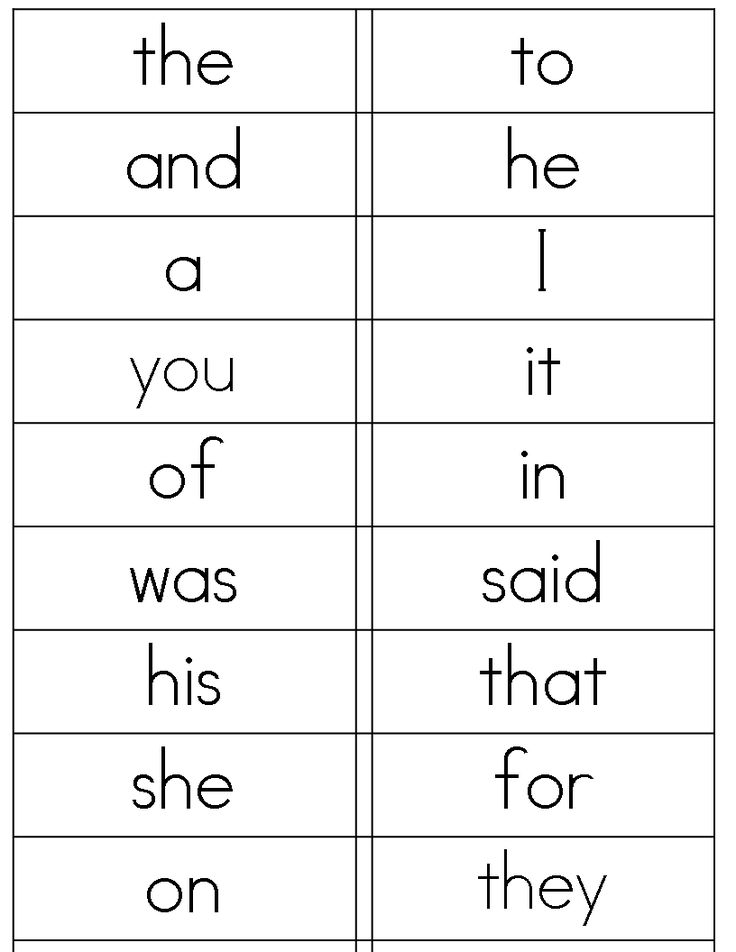 Sight words are words that cannot be decoded, so knowing spelling rules or phonics will not help a child sound out the word. High-frequency words are commonly used words that students need to know. Some high-frequency words are decodable using spelling and phonics rules, and some are not. As a result, it is important to help students recognize both sight word and high-frequency words by sight, so that they can recognize them automatically. As you begin to introduce spelling rules, phonics and syllabication to Kindergarten children, be sure to highlight high-frequency words they have memorized that fit a given rule. Regardless of whether the word is a sight word or high-frequency words, they both must be taught explicitly and systemically so that children will know them automatically.
Sight words are words that cannot be decoded, so knowing spelling rules or phonics will not help a child sound out the word. High-frequency words are commonly used words that students need to know. Some high-frequency words are decodable using spelling and phonics rules, and some are not. As a result, it is important to help students recognize both sight word and high-frequency words by sight, so that they can recognize them automatically. As you begin to introduce spelling rules, phonics and syllabication to Kindergarten children, be sure to highlight high-frequency words they have memorized that fit a given rule. Regardless of whether the word is a sight word or high-frequency words, they both must be taught explicitly and systemically so that children will know them automatically.
Q: When should sight words be taught?
A: While most Pre-K children are able to master some sight words, it is important to remember that children learn language skills at different rates. They also have different interest levels when it comes to learning words.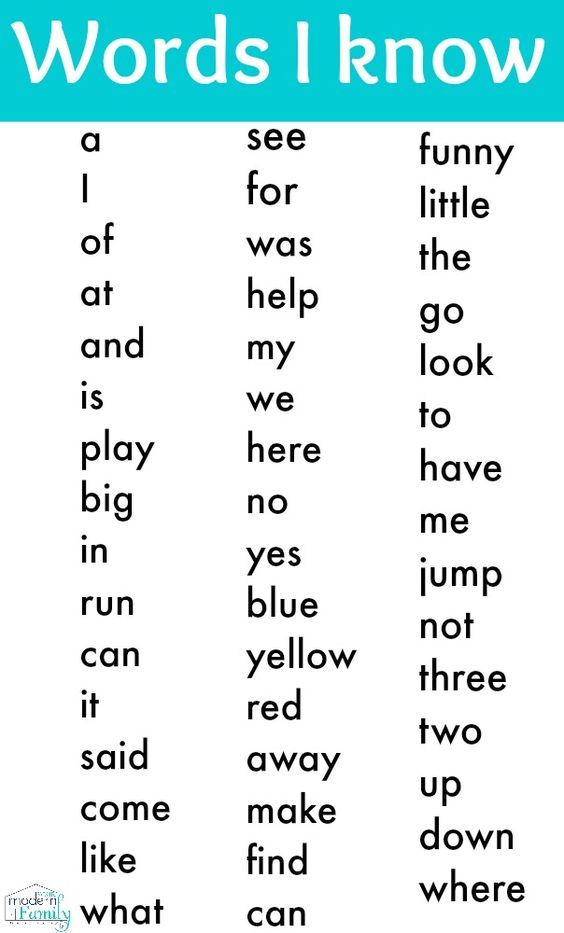 Some children are eager and ready to learn while others may not be. As a result, there is no specific age to begin teaching sight words. So try some fun sight word activities with your two- or three-year old children, but do not push if they are not interested. Let your child’s developmental readiness and interest level guide you.
Some children are eager and ready to learn while others may not be. As a result, there is no specific age to begin teaching sight words. So try some fun sight word activities with your two- or three-year old children, but do not push if they are not interested. Let your child’s developmental readiness and interest level guide you.
Q: How many sight words should kindergarteners learn?
A: There are varying opinions as to how many words children should learn. Some literacy experts like Tim Shanahan believe that kindergarteners should master 20 sight words by the end of kindergarten. The Dolch word list has 40 words listed for Pre-K students and some school districts require that kindergarteners learn 100 sight words by the end of the school year. Consider your children’s progress and interest levels as well as your school district’s expectation to help decide on the appropriate number of sight words for your children.
Q: What order should I teach sight words?
A: There is no one set prescribed order to teach sight words.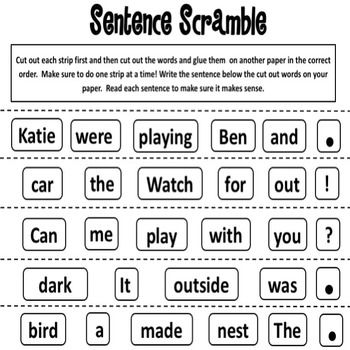 Some teachers and parents teach the sight words from the Dolch or Fry lists in alphabetical order. Others use the lists and create their own order. Consider using the Frequency Fry List that has words ranked by the frequency of use for reading and writing. To help children learn sight words and get them to stick, create your own lists to teach students the words not only in isolation, but also in context. For example, if you decide to read a specific book, teach the sight words from the book you are reading. This gives children practice reading the word in isolation and also helps them to see how the word is used in language.
Some teachers and parents teach the sight words from the Dolch or Fry lists in alphabetical order. Others use the lists and create their own order. Consider using the Frequency Fry List that has words ranked by the frequency of use for reading and writing. To help children learn sight words and get them to stick, create your own lists to teach students the words not only in isolation, but also in context. For example, if you decide to read a specific book, teach the sight words from the book you are reading. This gives children practice reading the word in isolation and also helps them to see how the word is used in language.
Q: How many sight words can be taught in a day?
A: Before determining a set number of sight words to teach, it is important to focus on the number of words that children are actually learning. It is important to consider the quality of their learning, not the quantity. Make certain that children can recognize sight words instantly and accurately before rushing to complete a certain number of words. Before starting, be sure to consider the child’s age, motivation and memory skills. Keep in mind that a child who can instantly and accurately name 50 sight words is building a more solid reading foundation versus a child who “kind of knows” 100 words.
Before starting, be sure to consider the child’s age, motivation and memory skills. Keep in mind that a child who can instantly and accurately name 50 sight words is building a more solid reading foundation versus a child who “kind of knows” 100 words.
Start by introducing children to three to five new words during a given lesson. During the next day’s lesson, review the previously introduced words. If children remember all of the words, consider introducing three to five new words. If children do not remember the previous words, review the previously introduced words and wait to introduce new words. Also, consider reducing the number of words you introduce in each lesson to one or two words if children are struggling or feel overwhelmed.
Learning Without Tears Knows Sight Words!
There are lots of fun, engaging strategies to teach children sight words. Before you begin teaching sight words, make certain you have broken down the word lists into manageable and differentiated lists for your students.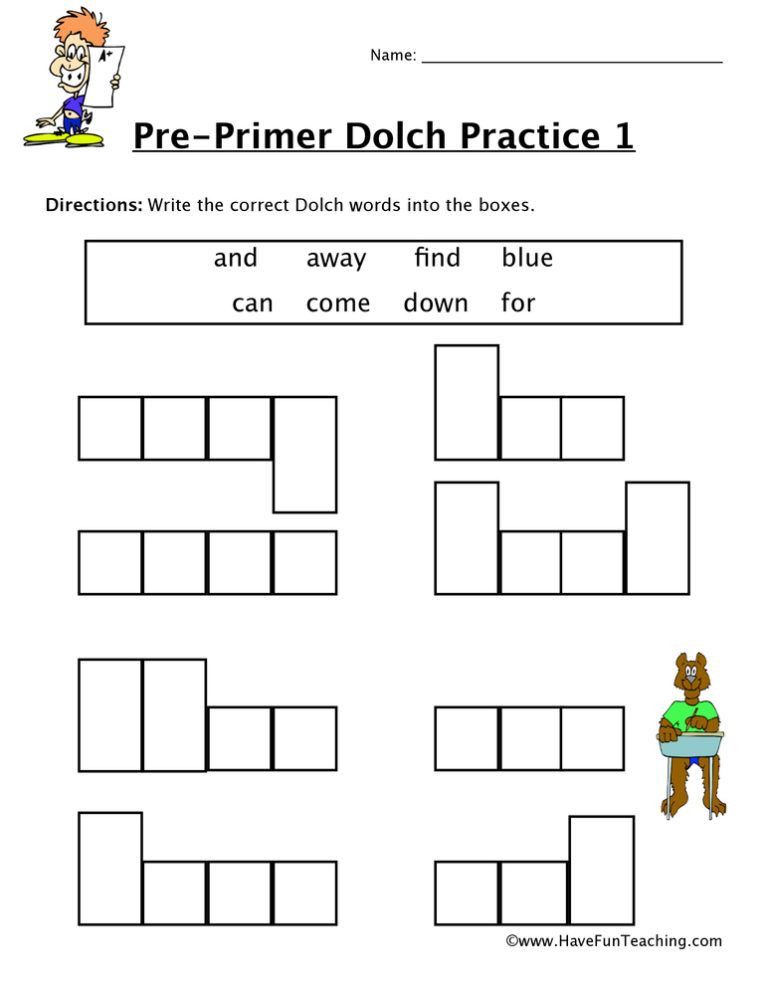 Secondly, no matter whether you are teaching your children in person or virtually, it is important to devote at least 15-20 minutes a day to teaching sight words. Lastly, make learning sight words is a fun and interactive activity. Below are 10 engaging sight words activities to do with your children.
Secondly, no matter whether you are teaching your children in person or virtually, it is important to devote at least 15-20 minutes a day to teaching sight words. Lastly, make learning sight words is a fun and interactive activity. Below are 10 engaging sight words activities to do with your children.
Sight Word Concentration – On index cards, write the same sight words on two separate cards. Make two piles – one with the word and the other with the matching word. Mix the two piles and place them face down. Have children take turns to find the matching cards. Consider having children write down the words that they found. Use Learning Without Tears’ A+ Worksheet Maker to create worksheets where they can copy the words.
Build-A-Sight Word – Children love building words with manipulatives like magnetic alphabet letters. Learning Without Tears’ Magnetic Lowercase & Blackboard Set contains magnetic lowercase letters and a magnetic blackboard with double lines so that children can build and write sight words. Children can also build sight words using Learning Without Tears’ free Make Your Own Letter Cards.
Children can also build sight words using Learning Without Tears’ free Make Your Own Letter Cards.
Sight Word Bingo – Create individual bingo cards using sight words that you have introduced. You can also give students a blank board and have them write the words in the boxes from a list you provide. Be sure to have the words written on index cards and pull them out of a container to call the sight words. Students should place a marker on the word when it is called. Students must yell "Sight Word Bingo!" when they have covered a vertical, horizontal, or diagonal row.
Stamp Out Sight Words – Using alphabet cookie cutters, have students stamp out letters using dough, then have children build sight words. Model for students first, then have them do it with you. After guiding them, have them try to build it independently. This fun activity is also great for building fine motor skills.
Sentences with Sight Words – Learning Without Tears’ Sentence School is a great way to help students learn sight words and write sentences. Students will love the engaging, hands-on lessons, and the guide is a great resource for teachers and parents alike.
Students will love the engaging, hands-on lessons, and the guide is a great resource for teachers and parents alike.
Sight Word Detective – Show children a sight word with a missing letter. Have children act as detectives to find the missing letter. You can play as a whole class, in teams, or individually. To make it more challenging, remove more than one letter. Also consider using the word with the missing letter in a sentence to help children practice context clues. You can write letters on a white board or use magnetic letters.
Sight Word Scramble – Using magnetic letters or letter cards, mix up the letters of the sight word and have children unscramble the words to reveal the correct spelling of the sight word. You can involve more children by giving each child a letter and have them spell out a sight word.
Sight Word Sing-a-Long – Music is a great teaching tool for children and adults. Learning Without Tears has lots of fun, engaging, and catchy songs to help students learn sight words.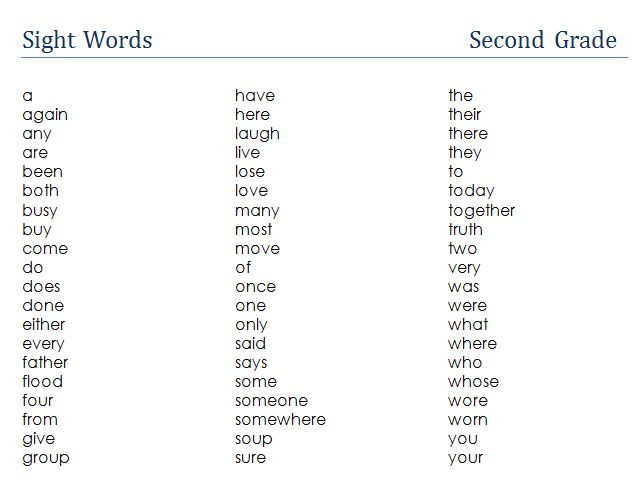 Consider displaying the lyrics from Learning Without Tears’ Rock, Rap, and Learn CD on a white board and have children circle all of the sight words. Lyrics to all songs are located on Learning Without Tears’ Handwriting Interactive Teaching Tool.
Consider displaying the lyrics from Learning Without Tears’ Rock, Rap, and Learn CD on a white board and have children circle all of the sight words. Lyrics to all songs are located on Learning Without Tears’ Handwriting Interactive Teaching Tool.
Read and Write Engaging Stories – Children feel more confident and excited when they begin to recognize words in a book. When reading to children, help them to identify sight words. Learning Without Tears’ MatMan Book series contains lots of sight words. Give sight word readers to children to begin reading on their own. After reading a story, write the sight words that they see and have children copy them. Also, encourage your students to create a funny story by writing down a sentence from each child. Circle all of the sight words they use.
Hand Activity Sight Words – To help children recognize sight words automatically and make them stick, teach them the attributes of the words using Learning Without Tears’ Hand Activity Method.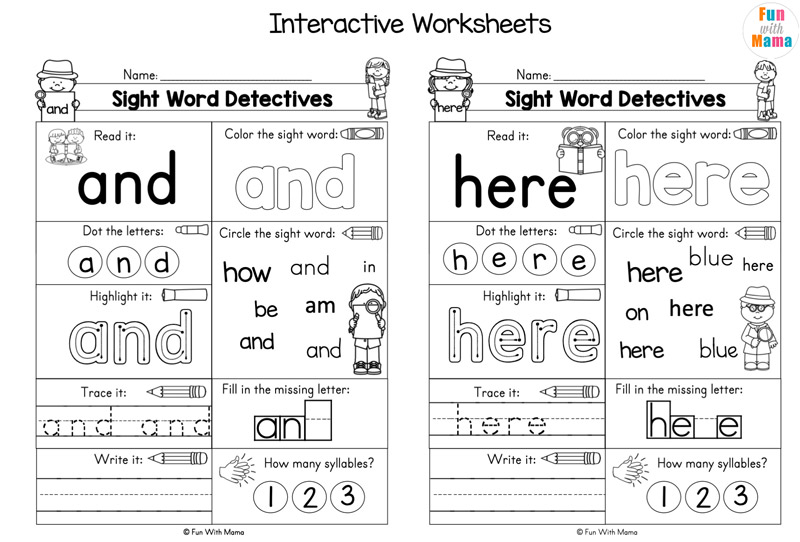 Some lowercase letters are tall (b,f,h), some are small (a, e, n), and some are descending (j, p, y). Have them use their hands to spell out the words or use the hands and letters from LWT’s Magnetic Lowercase & Blackboard Set to help them visualize the words. Also, consider highlighting other attributes of words—like the number of letters, consonants, and vowels—in order to help students connect with sight words.
Some lowercase letters are tall (b,f,h), some are small (a, e, n), and some are descending (j, p, y). Have them use their hands to spell out the words or use the hands and letters from LWT’s Magnetic Lowercase & Blackboard Set to help them visualize the words. Also, consider highlighting other attributes of words—like the number of letters, consonants, and vowels—in order to help students connect with sight words.
Explicitly teaching children sight words in a fun, engaging manner will help to build their reading rate, fluency, and confidence. Sight words will build a solid foundation for students to become proficient readers. Have fun!
Is There An Order To Teach Sight Words?Making English Fun
At a young age, children are introduced to picture reading books. The pages of these books are filled with words and visuals of people and items within their environment. Many of these words are sight words, which they will learn in Kindergarten and Elementary school.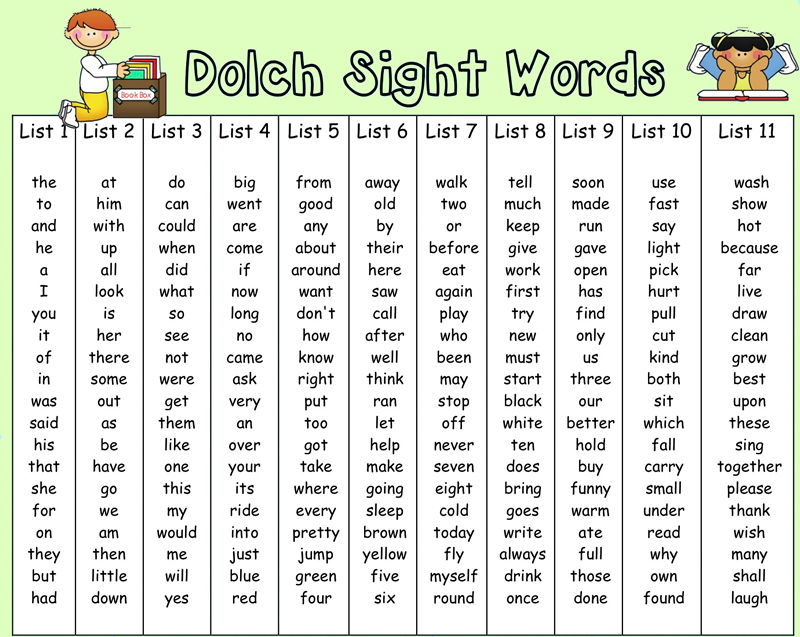 But is there an order to teach these sight words?
But is there an order to teach these sight words?
There is no specific order to teach sight words as they are not skill based, but teachers often start with the Dolch List of Basic Sight Words. This list groups sight words together according to children’s school level. These sight words are more likely to appear texts that children at these levels are familiar with.
The Dolch List of Basic Sight Words is used in most schools in the US, but what are sight words, and how are they taught. Is it necessary for children to learn the letters of the alphabet first and is there an order to teach sight words. Join me in learning more about sight words!
What Are Sight Words?
Sight words are words that we use every day, either in reading or when speaking. Sight words or high-frequency words, as they are also known, are used so many times in reading that children know them by sight without spelling them out. Examples of site words are; (in, the, on, it, but, they, with).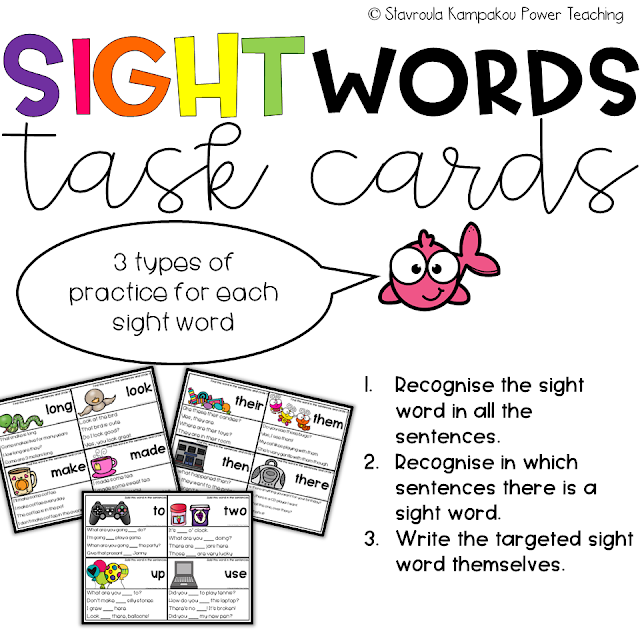 Building a large base of sight words will help children to read more fluently.
Building a large base of sight words will help children to read more fluently.
In classrooms around the US, teaching sight words to children learning to read is a top priority. There are two types of sight words: phonetically (to sound out) spelled, e.g., can, for, will, and phrases that are difficult to sound out are non-phonetic or tricky sight words such as; talk, the, come, once.
Amazon.com
ThinkFun Zingo Sight Words Award Winning Early Reading Game for Pre-K to 2nd...
$21.16
BUY NOW
- 31%
Amazon.com
Learning Resources Sight Word Swat a Sight Words Game - 114 Pieces, Ages 5+...
$12.25 $17.99
BUY NOW
Amazon.com
Learning Resources Pop For Sight Words Game,Vocabulary/Literacy Game, 92...
$10.99
BUY NOW
When To Start Teaching The Dolch List Of Sight Words?
Children can learn sight words from age four depending on their ability to recognize letters and interest in wanting to read.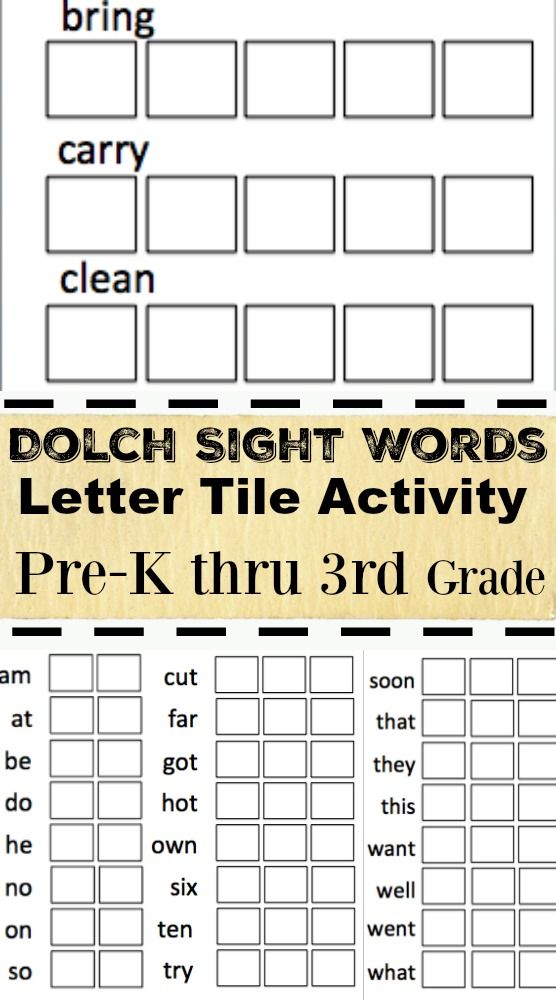 The Dolch List of Basic Sight Words is age-appropriate from Pre-K(Pre-Primer), Kindergarten (Primer), First Grade, Second Grade, and Third Grade. We actually have worksheets for kindergarten sight words free on the site.
The Dolch List of Basic Sight Words is age-appropriate from Pre-K(Pre-Primer), Kindergarten (Primer), First Grade, Second Grade, and Third Grade. We actually have worksheets for kindergarten sight words free on the site.
The Dolch List was written by Professor Edward William Dolch, who, together with his wife, authored several children’s books. In 1936 he discovered the 220 sight words and later the 95 noun sight words still being used in schools today. The noun sight words were created to assist in comprehension and are taught to children learning to read. When he wrote it there was not much emphasis on the order to teach sight words.
In addition, this book has now been updated, Revised Dolch List (RDL), and has been extended to include 875 sight words. The need to update this book was to include teaching English as a secondary language (ESL) to non-English speaking students as English became the lingua franca around the world.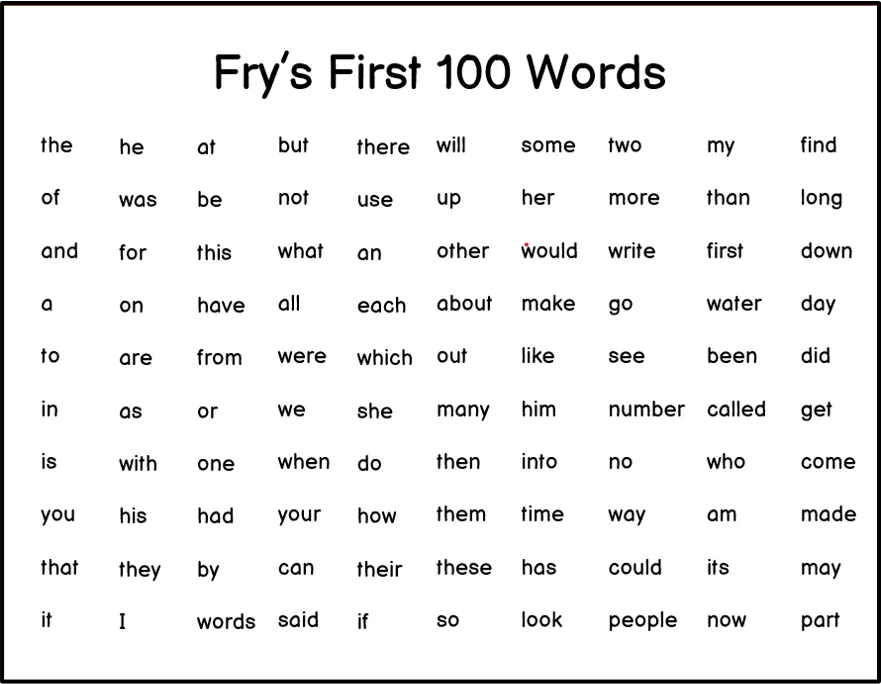
Why Is It Important To Teach Sight Words?
Learning sight words is essential as these words make up 75% of the words used in the reading books for children beginning to read. If a child knows these words by sight, reading will be more accessible, and the reading becomes more fluent. It can be taught alongside a phonics program, but with the large number of words in English it can’t be used a a sole alternative to phonics.
Mastering sight words builds confidence as the child will know most of the words on the page of the beginners reading books. Sight words encourage children to pay more attention to understanding (comprehension) the text when they do not need to spell out every word. Identifying sight words helps the child build reading speed and enables them to read independently.
Do You Teach Sight Words Or Phonics First?
There is debate amongst teachers whether to teach phonics or sight words first!
Teaching phonics enables children to learn the different sounds of letters to break down or decode words.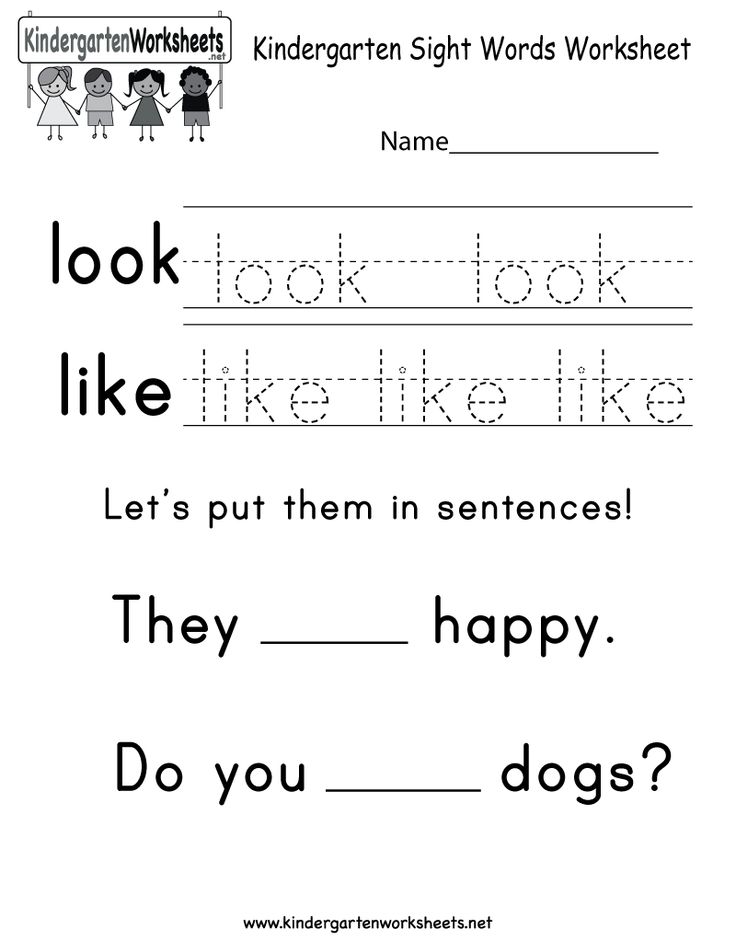 This decoding makes them more accurate readers and breaks the habit of guessing the words when they can now figure it out for themselves.
This decoding makes them more accurate readers and breaks the habit of guessing the words when they can now figure it out for themselves.
Sight words are learned by memorizing the words and not spelling them out. When reading a book, a child will quickly recognize the sight words, but if they don’t have a phonics foundation, they will not know how to spell out a word they have not memorized.
The best option would be to teach phonics and sight words at the same time. Together they make a great combination! Children are now able to find the letter-sound patterns in some of the sight words they memorize, and by decoding, they will be able to read unfamiliar words in their reading texts.
How To Start Teaching Sight Words To Children
Teaching sight words begins when children have already learned and known all the upper and lower-case letters of the alphabet. It is easier to start teaching 3 to 5 sight words at first and then add more once they have mastered these first words.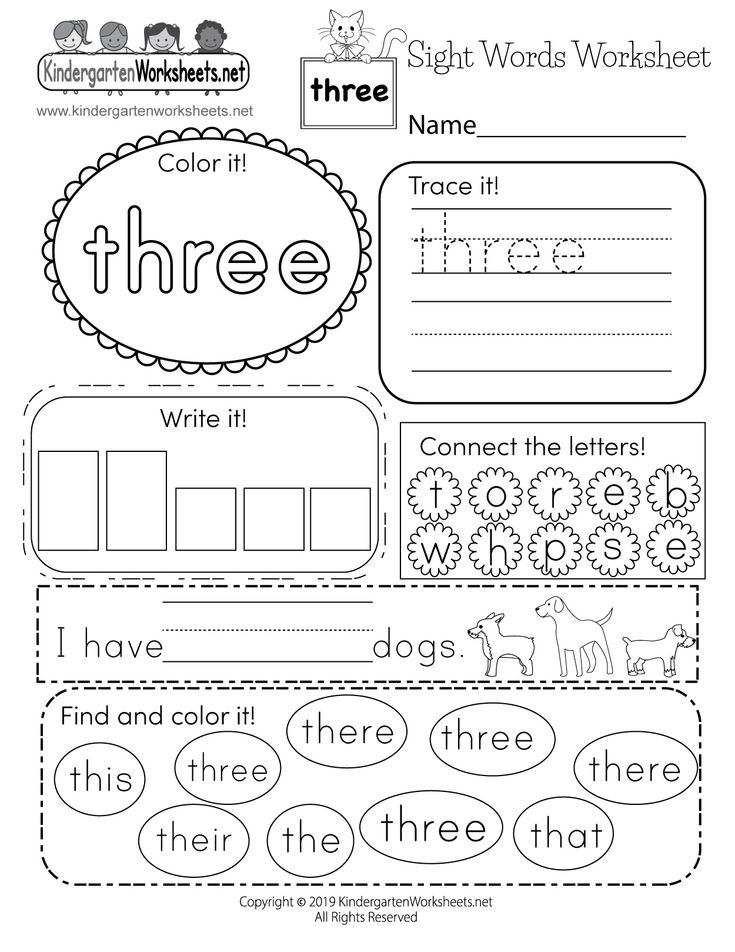 The noun sight words are taught to children when learning to read.
The noun sight words are taught to children when learning to read.
Presenting flashcards, wall words, and posters to children helps them memorize the words through visual connections. Sight words are also learned through constant repetition using exercises to store them and their spelling patterns into the child’s long-term memory. Using games and activities allows children to have fun while learning and will keep them engaged and motivated.
We have a (very) large article with advice and tips on how to teach sight words below. This offers more advice for you if you need help teaching sight words.
The Best Way To Learn Sight Words
A typical lesson to learn sight words would be as follows:
- The lesson should not be longer than 30 minutes—10 minutes for the class, followed by 20 minutes of sight word games.
- Review the words learned in the previous lesson by using the See and Say technique. If the child struggles to recognize a word, review again using all five techniques.
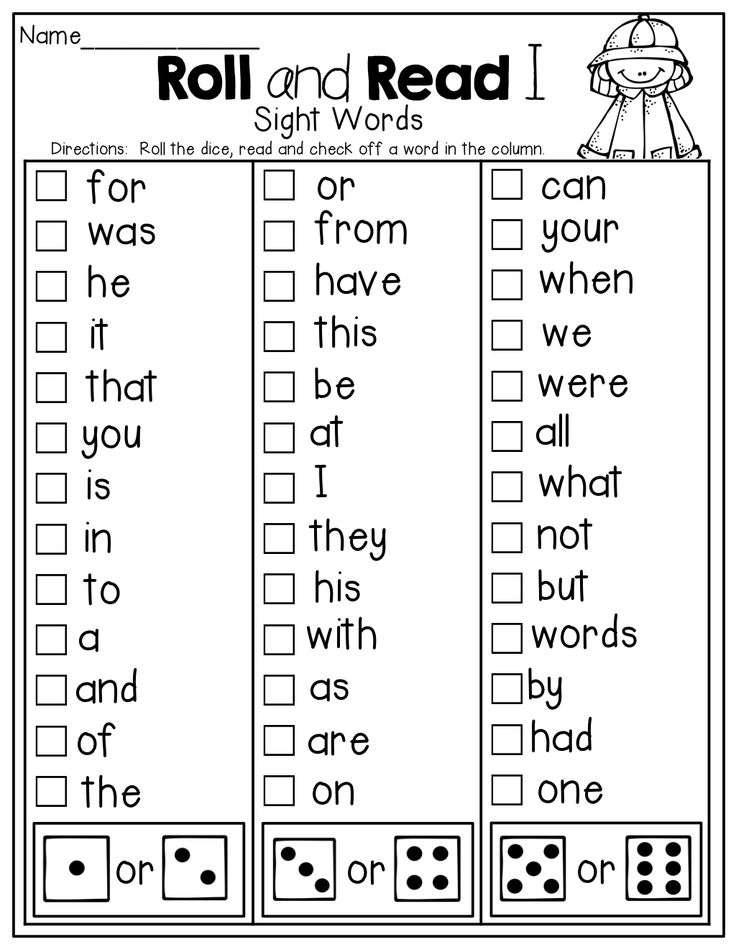 If a child has difficulty recognizing two words, then base the lesson on reviewing all the words again and not introducing any new words.
If a child has difficulty recognizing two words, then base the lesson on reviewing all the words again and not introducing any new words. - Site Word Teaching techniques activate parts of the brain by using repetition and physical movement. Together these techniques focus on; keeping the child attentive and reinforcing each word to their long-term memory.
- See and say – using flashcards, the child sees the word and says it while underlining it with their finger.
- Spell and read – the child sees the word and spells out the letters, then rereads the word.
- Arm tapping – Says the word and spells out the letters while tapping on their arm and reads the word once again.
- Air writing – Says the word and writes the word in the air in front of the flashcard.
- Table writing – the child, writes the letters on the table, first while looking at the flashcard and then by memory.
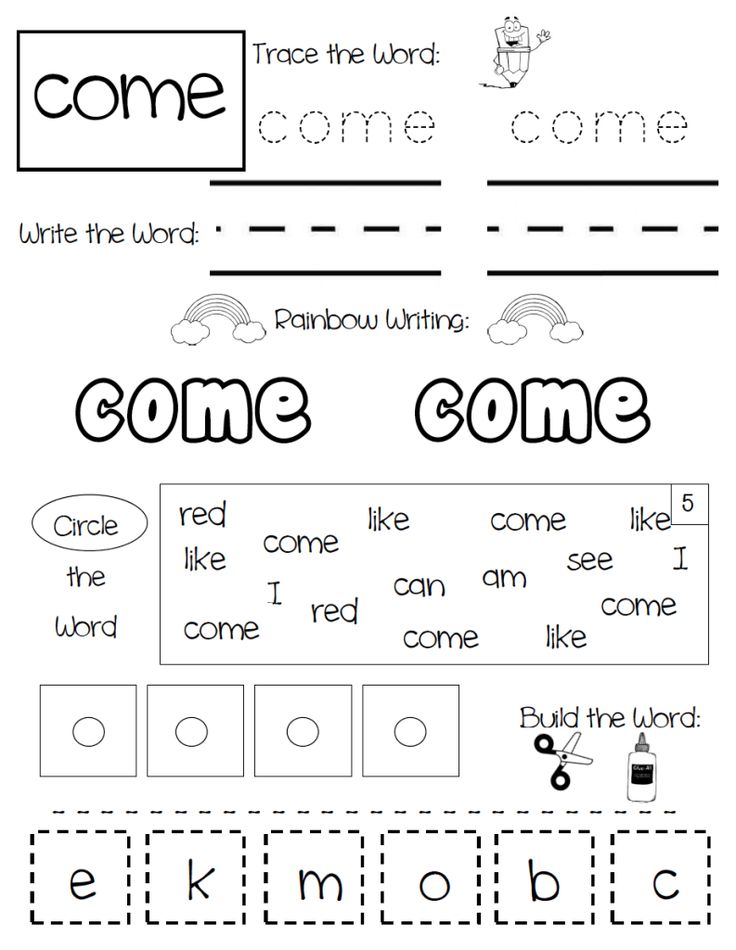
- Start with three new words at first, introducing one word at a time, then slowly build up to teaching more words in a lesson.
- Correcting mistakes – children will make mistakes when learning these words. They may struggle with phonetically irregular words (great, live) or mix up words that look alike (was, saw).
- Repetition – when a child makes a mistake, they say the word, and the teacher underlines the word with a finger. Using the word in a sentence will help to understand the meaning of the word. Correct the mistake and continue with the lesson. Do not sound out the word as they must instantly recognize sight words.
- Reinforce repetition with fun games at the end of the lesson.
If there is nit time for full 30 minutes of esson time, then using sight words games as warm up exercises or closing of lessons is a great way to keep children exposed to and learning sight words
Sight Word Resources
below we have a selection of the FREE sight word resources, activities games and worksheets we have on the site.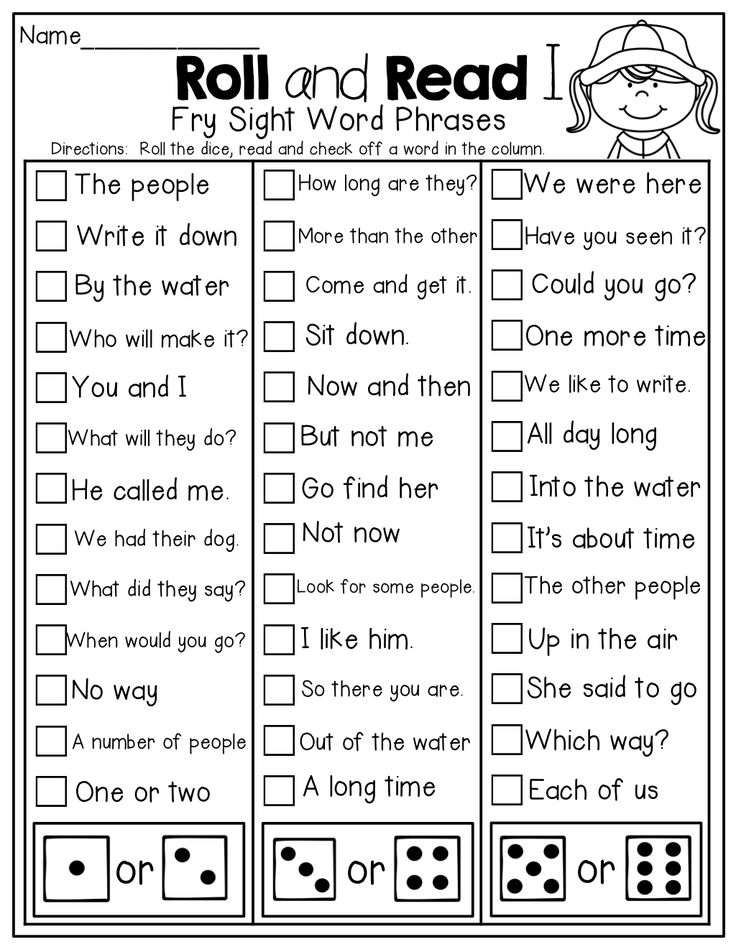
You can click on the link to access these and we hop they are as useful to you as they have been to use in our classrooms. We have included our CVC generator here which is not strictly site words but is great for working on decoding skills.
Conclusion
There is no definite order to teach sight words and there are not skills based but rote learned. There Is no decoding of these words using phonics skills. However, using the Dolch List of Basic Sight Words is recommended and used in many US schools. The list contains sight words for children from Kindergarten to Grade 3.
Sight words are the most commonly used in literature. These sight words are instantly recognized and do not need to be spelled out. Learning sight words build speed and fluency in reading.
They are especially useful to teach emergent readers to give their reading meaning and to instil confidence that help them progress on their reading journey.
References
https://www.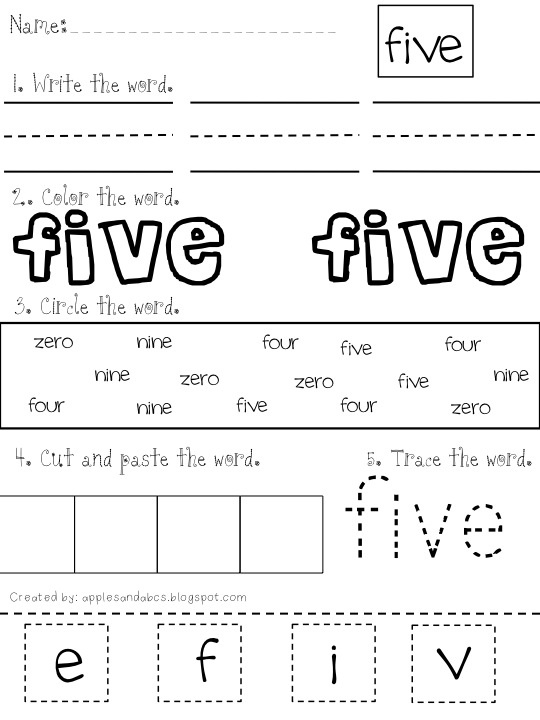 understood.org/articles/en/what-are-sight-words
understood.org/articles/en/what-are-sight-words
https://www.education.com/magazine/article/firstgradesightwords/
https://files.eric.ed.gov/fulltext/EJ1183980.pdf
Like this:
Like Loading...
Making English Fun!
I have been a teacher of English for over 15 years, in that time i made hundreds and thousands of resources and learnt so much i think its worth sharing. Hopefully to help teachers and parents around the world.
What is the best order to learn English words
How to learn English words: 7 memorization tips that work
The human brain tends to save effort (some will call it laziness): if there is a chance to somehow simplify the process, he will definitely take advantage of this chance . Our cunning "processor" admits new foreign words to the chamber of long-term memory far from immediately; first they have to serve their time in a kind of waiting room - in short-term memory. If a new word is not used, not repeated, it will be forgotten rather quickly: the brain mercilessly gets rid of unnecessary information.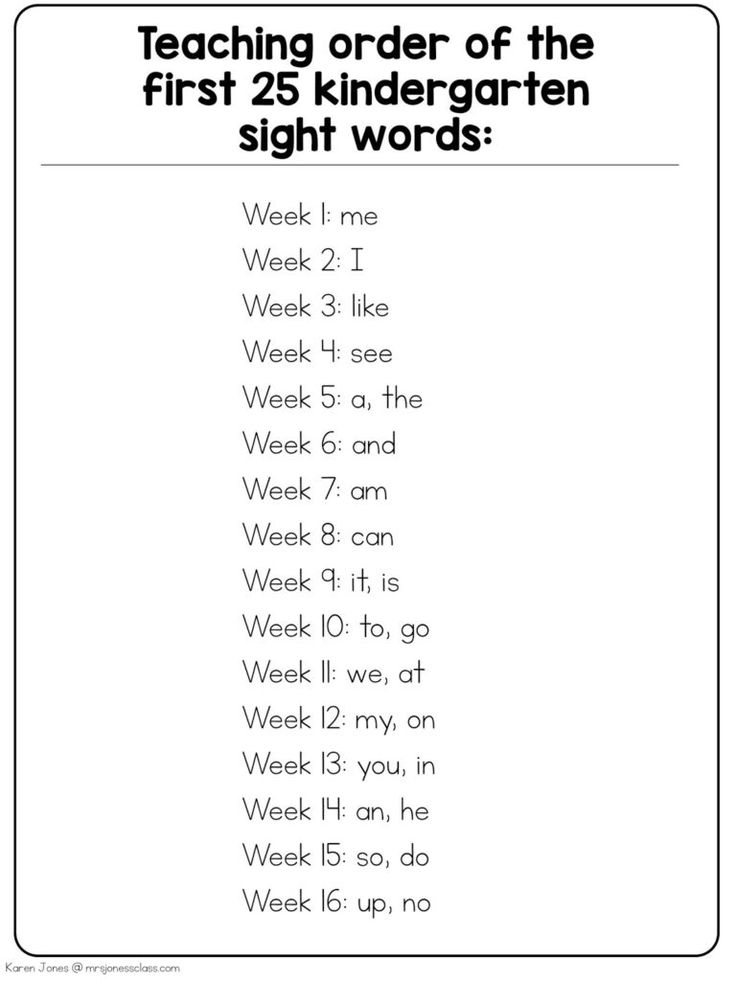 If you repeat the memorized word - and you need to do this at strictly defined moments - you will remember it forever. What is the secret of correct memorization of new information?
If you repeat the memorized word - and you need to do this at strictly defined moments - you will remember it forever. What is the secret of correct memorization of new information?
So, human memory is divided into two types:
- Short-term or operational
- Long term
The information that enters the brain is first stored in the working memory. Over time, depending on the frequency of use, this information becomes a long-term, long-term memory. Back at the end of the 19th century, the German psychologist Hermann Ebbinghaus experimentally proved the well-known postulate of a direct family relationship between learning and repetition. During the experiment, Ebbinghaus determined exactly when to repeat new words in order to remember them for a long time, if not forever.
The sad fact is that Hermann Ebbinghaus' most valuable discovery is hardly used today. Analysts and developers at Skyeng School hope to change this situation: a mobile application for learning new words using the Ebbinghaus discovery is currently under development. The release of the application is planned soon - follow the news of the company.
The release of the application is planned soon - follow the news of the company.
Many methods offer to learn 100 words in an hour or 1000 words in 3 days - and this is possible. But the problem is that, once in short-term memory, new words do not pass into long-term memory: easy come - easy go (what comes easy, goes easy).
7 + 1 effective way to memorize foreign words
Tip 0: Follow the rational repetition mode
So, the very first, even zero tip: to remember a new word forever, stick to the following repetition schedule:
How to learn English words: simple and modern techniques
- 358 shares
- 146
- 199
- 8
- 5
- 0
Published: 03/19/2018 ⋅ Author: Ingleks
Want to learn how to learn English words quickly and easily? We will tell you how many words you need to know, where to get them from, what tools to use and how to learn all this in general. Use at least a few tips and you can expand your vocabulary.
All students are interested in the question: "How to learn English words?" The more vocabulary we know, the better we understand what the heroes of our favorite English films are talking about, what is written on the Tate Modern museum plaques, and how favorable the terms of the transaction are offered by our partners from the USA. Today we will give some recommendations that will help you learn new vocabulary effectively.
Before that, we advise you to watch the webinar of our methodologist Yulia on the topic “How to learn English words”.
How many English words do you need to know? It will show your approximate vocabulary which you can compare with the average scores of native speakers and English learners. On average, 3,000 - 4,000 words will be enough to communicate on most topics.
However, we want to warn you: do not rely solely on the results of the test. It can only give a rough estimate of your vocabulary.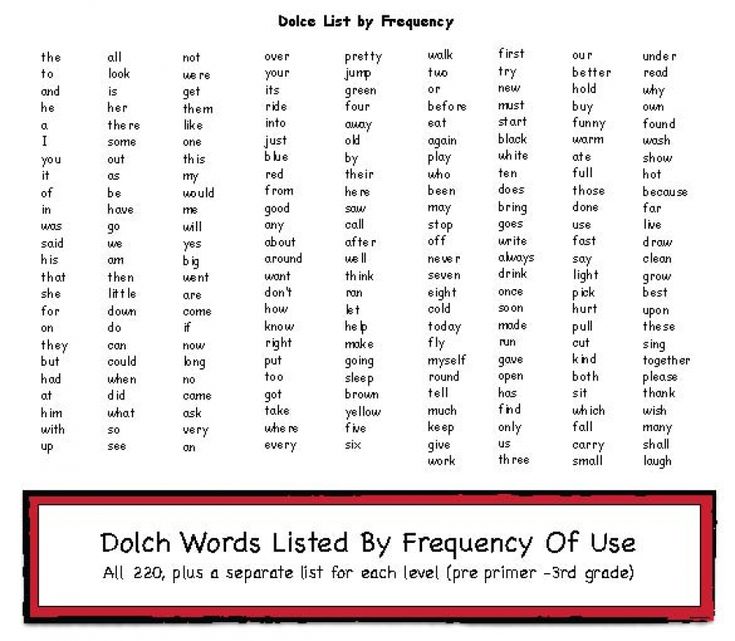
Our English Level Chart has a Vocabulary column that tells you how many words you need to know at each level.
And now let's find out what English words you need to learn:
- Basic vocabulary needed to understand foreign speech. There are eternal topics like "Greeting", "Family", "Food" - every person needs to know them.
- The words you need. If you need English for work, learn general business terminology or more specific industry terminology, such as for IT professionals. If you want to travel more, learn travel phrasebooks.
- Mastering all the lexical sets is impossible and pointless. Why do you need medical topics if you are not a practicing doctor? Except for watching "Doctor House" 🙂 Consult with an experienced English teacher, he will tell you exactly what to study.
Where to get new English words
1. Favorite movies, series, songs, podcasts, books
This method is good because words are remembered in a context that is not boring for you.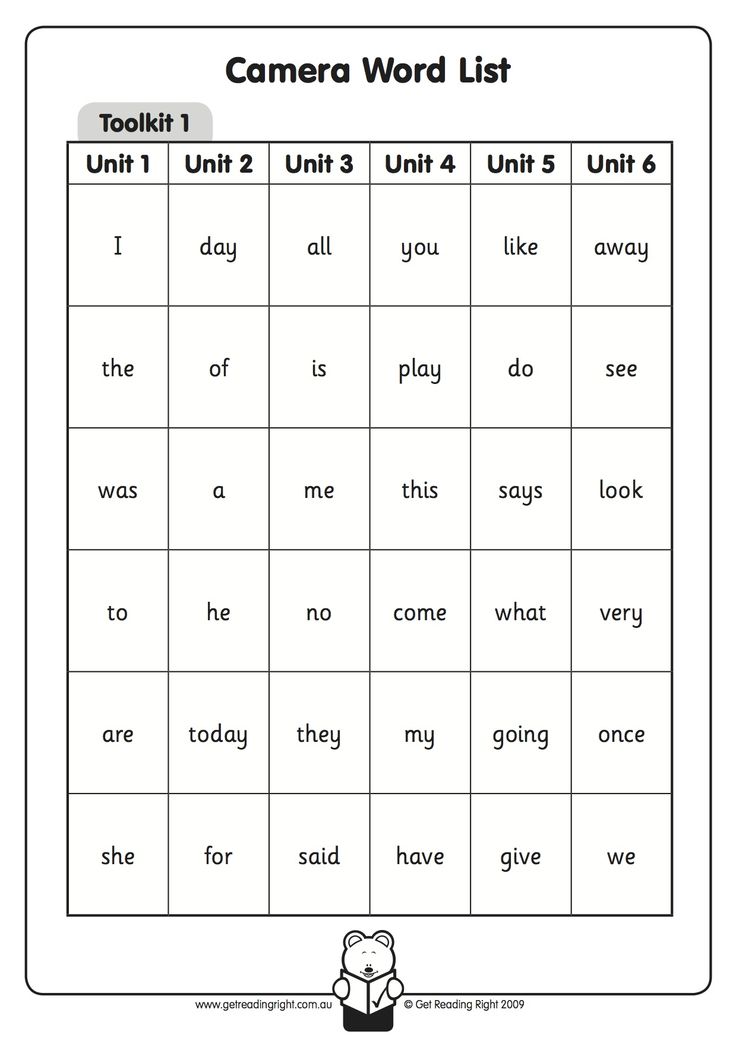 If you already watch films in English, you should take vocabulary from there. We advise you to use the ororo.tv resource. It is paid, but worth the money: you can watch new movies and TV shows in good quality with Russian and English subtitles. As soon as you come across an unfamiliar word, click on it and it will automatically go into your personal dictionary of new words.
If you already watch films in English, you should take vocabulary from there. We advise you to use the ororo.tv resource. It is paid, but worth the money: you can watch new movies and TV shows in good quality with Russian and English subtitles. As soon as you come across an unfamiliar word, click on it and it will automatically go into your personal dictionary of new words.
You can find the texts of most English-language songs on the Amalgam resource. Or use the search bar in the browser: enter the name of the song and add the word lyrics. We also recommend a selection of podcasts, audio series and radio shows, as well as resources for downloading books online.
2. Special textbooks
Vocabulary books will help you learn new words and set expressions in which they are used. The benefits of manuals are that they provide lists of words along with examples of their use, so words are learned in context. We have presented a detailed review of textbooks for learning English vocabulary, be guided by it to choose the best manual.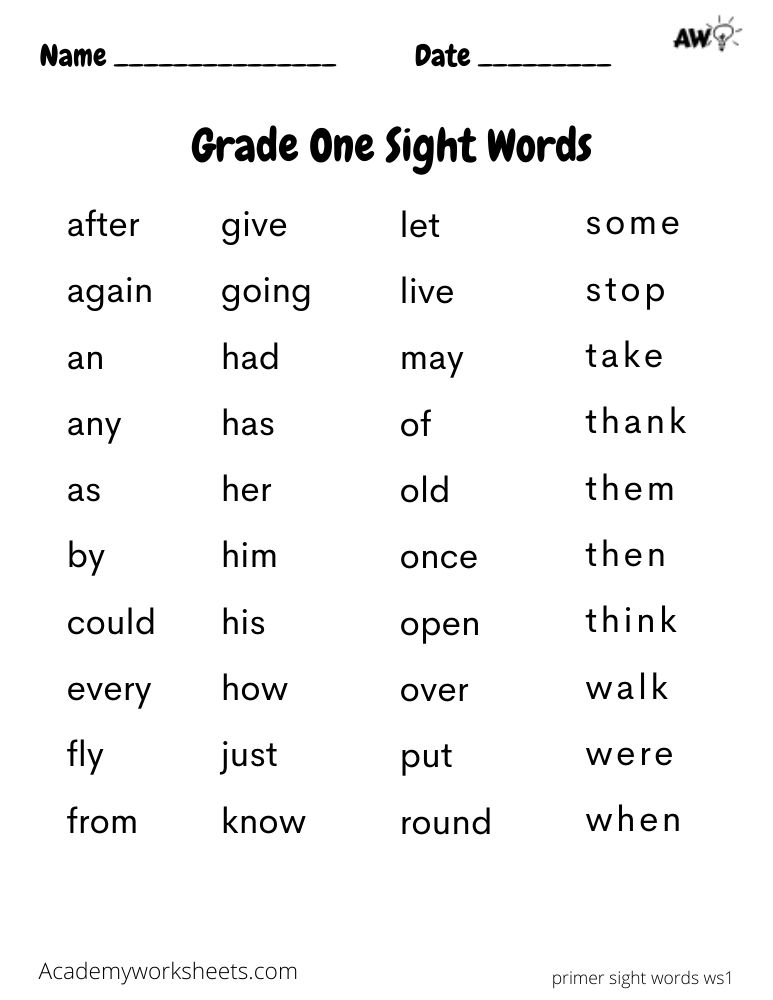
3. Lists or dictionaries of high-frequency words
How do you know if it's worth remembering the next new English word you come across? It may have fallen into disuse or is rarely used. You can refer to lists of words that are most commonly used by native speakers. We recommend you lists from the Oxford Dictionary - The Oxford 3000 British Dictionary and The Oxford 3000 American Dictionary. These are the 3,000 most important words any English learner should know. They have been carefully selected by linguists and experienced teachers. You can recognize these words in the Oxford dictionary itself by the key icon.
Tools for learning new words
1. Word cards
This technique may seem old-fashioned, but it is still effective. All students at least once in their lives started cards and tried to learn new vocabulary from them. It is convenient and affordable: no need to spend money, because you write them yourself, and you can take the cards with you anywhere.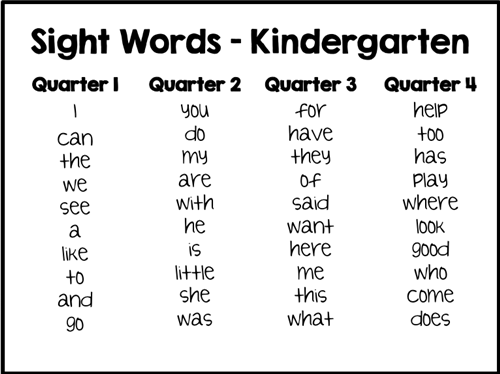
Before making cards, you need to choose a good dictionary that will help:
- pick up translation;
- get acquainted with typical phrases in which the word is used;
- study examples.
Then you should decide whether you will make paper or electronic vocabulary cards.
Paper cards
Color blocks are recommended (one color = one theme). Beginners can choose from the following options:
- On one side of the paper we write the word in English, on the other - in Russian. We test our knowledge: we translate a word from Russian into English and vice versa.
On the one hand, we write the word in English and paste the picture, on the other hand, the translation into Russian. This method is well suited for people with associative thinking. In your mind, you associate a new English concept with the subject it denotes.
On the one hand, we write a word in English with a Russian context, on the other hand, a word in Russian without a context.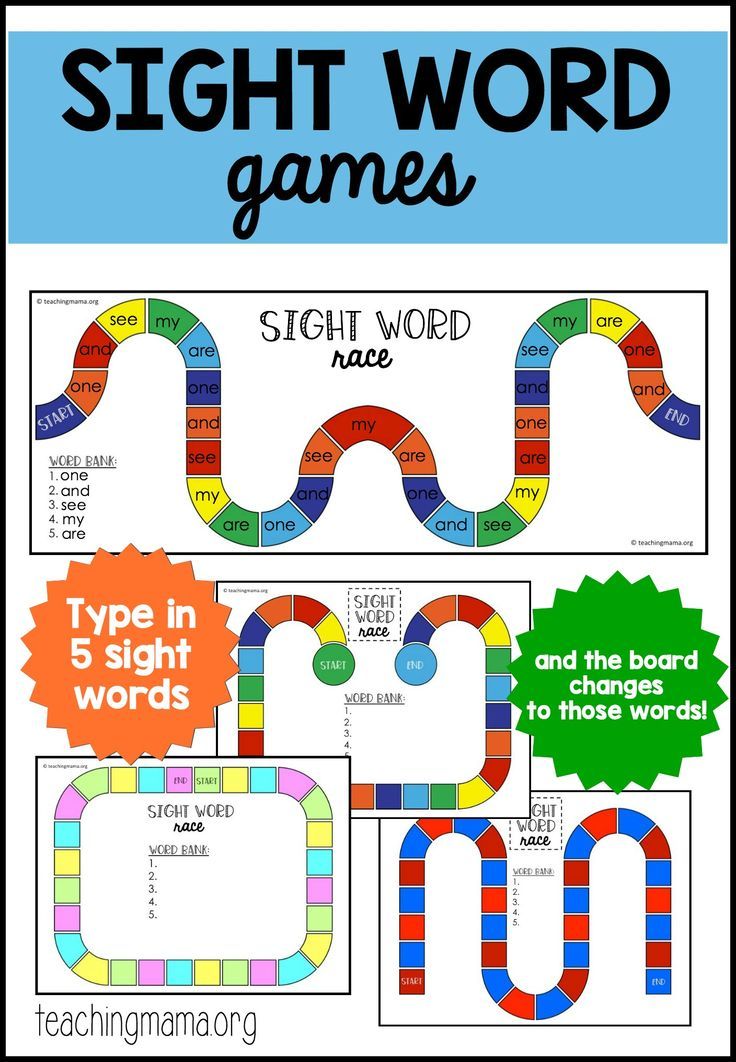 When repeating vocabulary, try to translate the concept from Russian into English. And with the translation in the opposite direction, the second side of the card with the Russian context will help you.
When repeating vocabulary, try to translate the concept from Russian into English. And with the translation in the opposite direction, the second side of the card with the Russian context will help you.
More experienced students are advised to use English-English dictionaries such as the Macmillan Dictionary. On one side we write the word in English, on the other - its definition in English. You can also write synonyms and antonyms of the concept under study.
How to learn vocabulary correctly? Remembering English words is best in context. Therefore, you can write on the card not just a word, but a sentence in which it is used. Example sentences can be found in electronic dictionaries, such as ABBYY Lingvo.
E-cards
If it's hard to get away from your computer, use your affection for good: create virtual stickers with words on your desktop and in a few days you will remember them well.
To create electronic vocabulary cards, we recommend the Quizlet service, which allows you to memorize words in different ways: choose the correct translation from four proposed ones, fill in gaps in sentences and play games with words. Here you can also track your progress: which words are harder for you than others, how quickly you learn new vocabulary. There is an app for Android and iOS. An alternative resource is Memrise. Its free version has limited functionality, but it will be enough for compiling flashcards.
Here you can also track your progress: which words are harder for you than others, how quickly you learn new vocabulary. There is an app for Android and iOS. An alternative resource is Memrise. Its free version has limited functionality, but it will be enough for compiling flashcards.
You need to constantly work with cards: review and repeat the learned vocabulary. Periodically change the cards to new ones, and after 1-2 weeks return the old ones again to repeat the words.
2. Vocabulary notebook
This method is good for those who constantly lose something: the cards are unlikely to last long 🙂
You can structure the notebook in any way you like. We present our version. Each page must correspond to a specific day. At the top, write the dates of the repetition of the words. In order for the studied vocabulary to be well fixed in memory, do not forget to train it. To do this, use the techniques described by us in the article "How to repeat so as not to forget anything.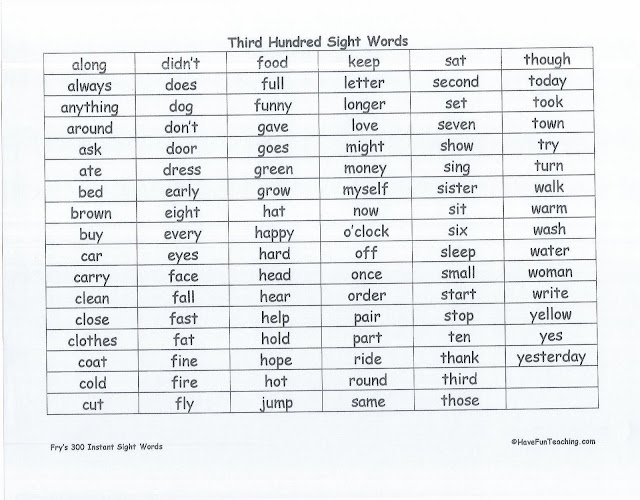 "
"
English words to learn for every day: useful vocabulary and tips for memorization
Of course, the basis of the language system is grammar, but without an accumulated lexical base, knowledge of grammatical norms is unlikely to be useful for a beginner. Therefore, we will devote today's lesson to replenishing vocabulary and mastering methods for quickly memorizing new vocabulary. There will be quite a lot of expressions in the material, so we recommend that you divide these English words for learning for each day in advance, working through 2-3 dozen new phrases and be sure to repeat the examples already studied. Before moving on to practice, let's find out how it is recommended to learn foreign words correctly.
Tips for learning English vocabulary
Learning vocabulary is half the battle, it is important to try to apply it constantly, otherwise it will simply be forgotten. Therefore, the main principle of learning English words is not to strive to memorize absolutely all the words encountered.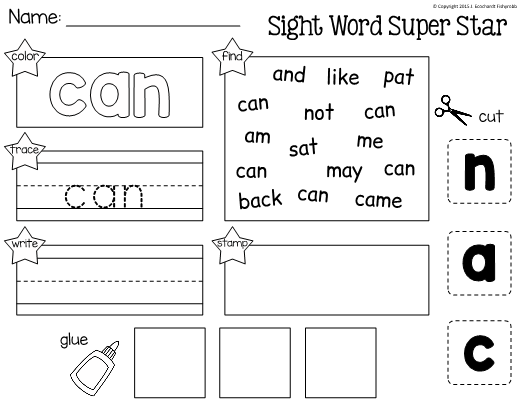 In modern English, there are about 1.5 million words and set combinations. Learning everything is simply unrealistic, so try to choose only the most used and necessary vocabulary for you personally.
In modern English, there are about 1.5 million words and set combinations. Learning everything is simply unrealistic, so try to choose only the most used and necessary vocabulary for you personally.
Suppose you have already decided on your area of interest, picked up the necessary lexical material and started to learn it. But things are not moving forward: words are slowly remembered and quickly forgotten, and each lesson turns into unimaginable boredom and a painful struggle with oneself. Here are some tips that will help you create the right learning environment and learn a foreign language easily and effectively.
- Combine words by meaning, creating thematic dictionaries: animals, pronouns, action verbs, restaurant conversations, etc. . Generalized groups are more easily deposited in memory, forming a kind of associative block.
- Try different ways to learn words until you find the method that works best for you. These can be popular cards, and interactive online simulators, and stickers pasted on various objects in the house, and applications for tablets and phones.
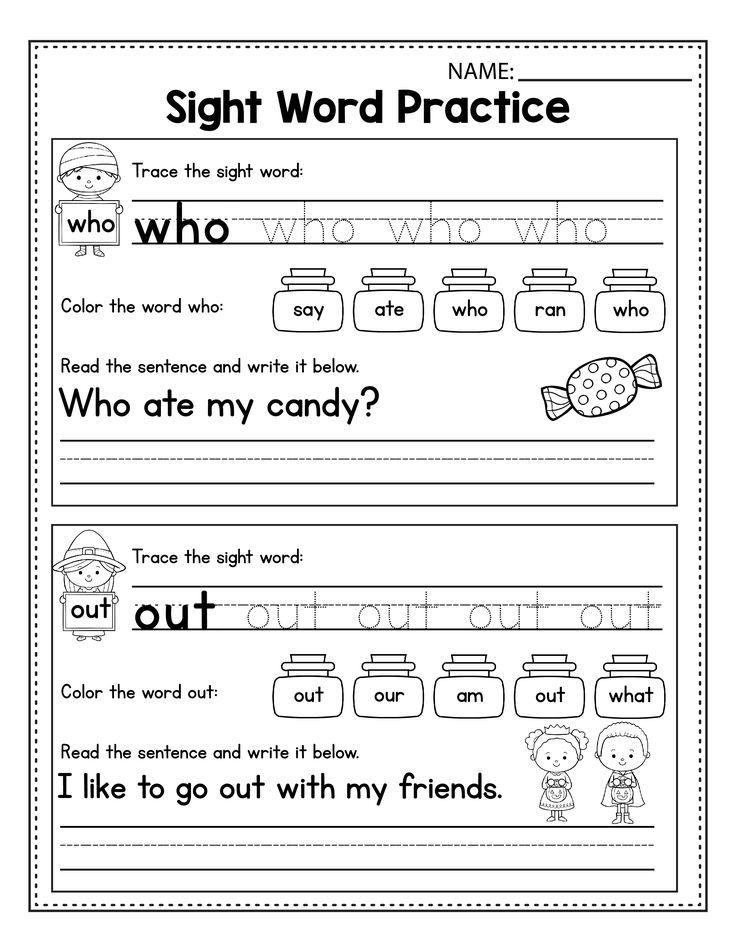 If you perceive information better visually and aurally, then actively use educational videos and audio recordings. You can learn by any means, the main thing is that the learning process should be a pleasant pastime, and not a boring duty.
If you perceive information better visually and aurally, then actively use educational videos and audio recordings. You can learn by any means, the main thing is that the learning process should be a pleasant pastime, and not a boring duty. - Immediately memorize how the word is pronounced. To do this, you must either refer to transcription, or use interactive resources. The program for learning the pronunciation of English words will not only help you remember the sound of an expression, but also check how correctly you pronounce it.
- Do not abandon the words you have already learned. This is a very important point. It seems to us that if we learn words for a long time, then we remember them once and for all. But memory tends to delete unclaimed information. Therefore, if you do not have constant speaking practice, replace it with regular repetitions. You can create your own notebook with days and repetitions, or use one of the interactive English learning apps.
Having worked through these tips, let's do a little practice.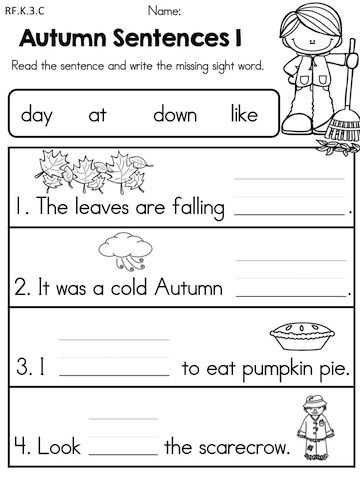 We bring to the attention of students the most popular vocabulary of the English language. These English words are suitable for learning for every day, as they are divided into several tables and presented in the form of small semantic groups. So, let's start replenishing our vocabulary.
We bring to the attention of students the most popular vocabulary of the English language. These English words are suitable for learning for every day, as they are divided into several tables and presented in the form of small semantic groups. So, let's start replenishing our vocabulary.
Sources: http://skyeng.ru/articles/kak-uchit-angliyskie-slova, http://englex.ru/10-useful-advice-on-how-to-increase-your-vocabulary/, http ://speakenglishwell.ru/anglijskie-slova-dlya-izucheniya-na-kazhdyj-den-sovety-dlya-zapominaniya/
7 memorization tips that work
Insufficient vocabulary is the eternal sadness of foreign language learners. Khariton Matveev, co-founder of the Skyeng school, shares proven ways to memorize new words.
English level test
Find out your level, get recommendations for learning and a promotional code for English lessons as a gift
The human brain tends to save effort (some will call it laziness): if there is a chance to somehow simplify the process, it is sure to use this chance will take advantage. Our cunning "processor" admits new foreign words to the chamber of long-term memory far from immediately; first they have to serve their time in a kind of waiting room - in short-term memory. If a new word is not used, not repeated, it will be forgotten rather quickly: the brain mercilessly gets rid of unnecessary information. If you repeat the memorized word - and you need to do this at strictly defined moments - you will remember it forever. What is the secret of correct memorization of new information?
Our cunning "processor" admits new foreign words to the chamber of long-term memory far from immediately; first they have to serve their time in a kind of waiting room - in short-term memory. If a new word is not used, not repeated, it will be forgotten rather quickly: the brain mercilessly gets rid of unnecessary information. If you repeat the memorized word - and you need to do this at strictly defined moments - you will remember it forever. What is the secret of correct memorization of new information?
How we remember information: types of memory and the Ebbinghaus curve
So, human memory is divided into two types:
- Short-term or operational
- Long term
The information that enters the brain is first stored in the working memory. Over time, depending on the frequency of use, this information becomes a long-term, long-term memory. Back at the end of the 19th century, the German psychologist Hermann Ebbinghaus experimentally proved the well-known postulate of a direct family relationship between learning and repetition.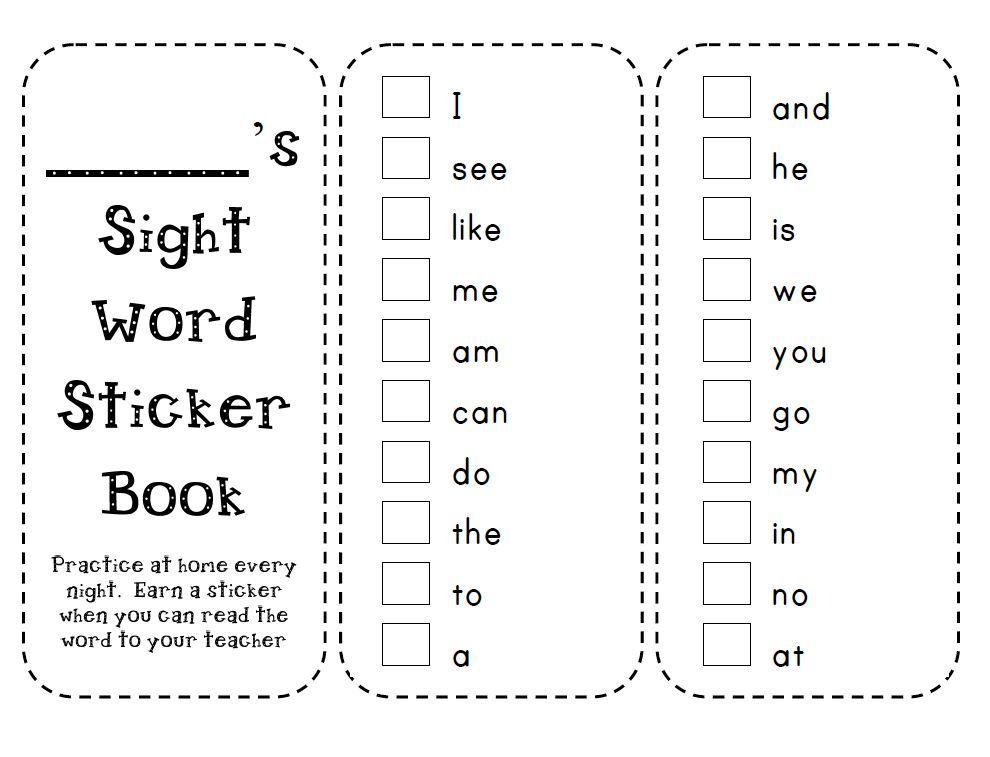 During the experiment, Ebbinghaus determined exactly when to repeat new words in order to remember them for a long time, if not forever.
During the experiment, Ebbinghaus determined exactly when to repeat new words in order to remember them for a long time, if not forever.
The sad fact is that Hermann Ebbinghaus' most valuable discovery is hardly used today. Analysts and developers at Skyeng School hope to change this situation: a mobile application for learning new words using the Ebbinghaus discovery is currently under development. The release of the application is planned soon - follow the news of the company.
Many methods offer to learn 100 words in an hour or 1000 words in 3 days - and this is possible. But the problem is that, once in short-term memory, new words do not pass into long-term memory: easy come - easy go (what comes easy, goes easy).
Demo lesson for free and without registration!
Take a lesson, learn about the school and get a promotional code for English classes
7 + 1 effective way to memorize foreign words
Tip 0: Follow the rational repetition mode
So, the very first, even zero tip: to remember a new word forever , stick to the following rep schedule:
| Repetitions | Repetition intervals |
| 1 | Immediately after learning a new word |
| 2 | 20-30 minutes after previous |
| 3 | One day after previous |
| 4 | 2-3 weeks after previous |
| 5 | 2-3 months after previous |
| 6 | 2-3 years after previous |
Tip 1: Memorize interesting things
The traditional approach to learning new words, tested by generations of schoolchildren, is this: foreign words are given in lists by topic, for example, “Introduction”, “Letter to a friend”, “My day”.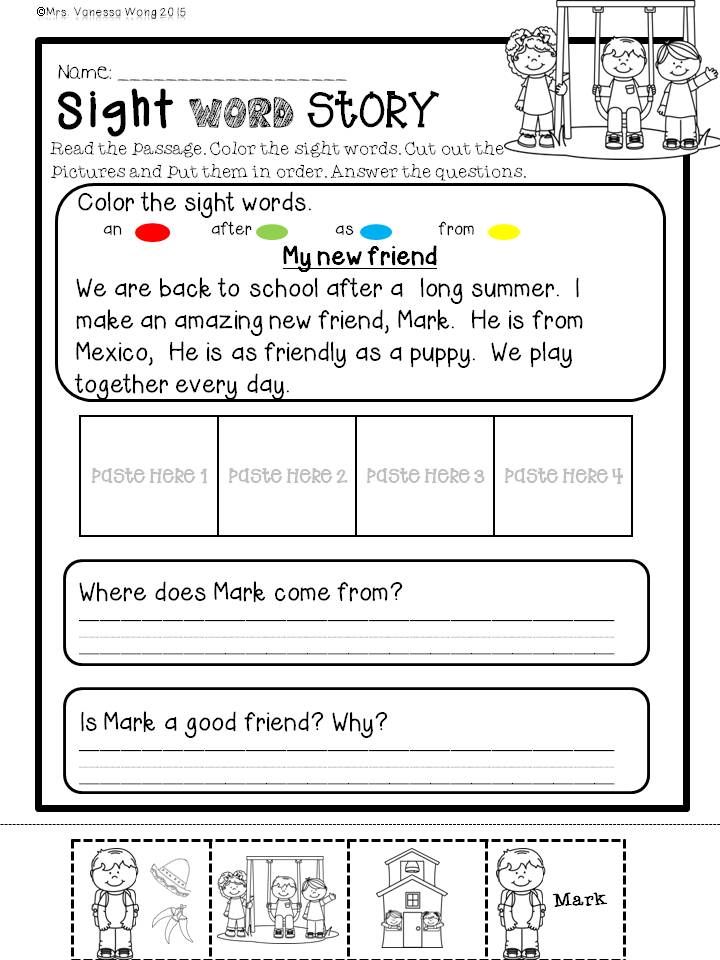 The set of topics is standard and universal, which is not always effective: if the topic does not arouse interest, it is much more difficult to learn new vocabulary. The experience of our school shows that if the choice of the studied words is approached in strict accordance with the specific goals and interests of each student, at the intersection of useful and pleasant, the result is optimal!
The set of topics is standard and universal, which is not always effective: if the topic does not arouse interest, it is much more difficult to learn new vocabulary. The experience of our school shows that if the choice of the studied words is approached in strict accordance with the specific goals and interests of each student, at the intersection of useful and pleasant, the result is optimal!
For example, if you like the Game of Thrones series, you will be much more interested in learning words, generating images and concepts that are related to the plot of the film, for example: queen - queen, northern - northern, wall - wall, castle - castle.
Tip 2: Think deeply
The law of comprehension: according to Ebbinghaus, meaningful material is remembered 9 times faster. It is not so much the words and sentences that make up the text that are imprinted in the memory, but the thoughts contained in them. They are the first to come to mind when you need to remember the content of the text.
They are the first to come to mind when you need to remember the content of the text.
However, learning how to properly organize information at the time of memorization is not an easy task. You can use key words, diagrams, charts and tables. The forecasting technique is also effective: after starting to read a paragraph, try to draw a conclusion on your own after putting forward several arguments by the author, explain to yourself what you have read, even if it seems obvious to you. Having formulated the information in your own words, you will remember it for a long time.
Tip 3: Strengthen the first impression
To better remember a new word, connect 5 senses plus imagination: feel the situation, imagine a picture, try to smell and taste, say the word - or sing it.
Visualize, imagine: in a distant northern (northern) country, behind a high fortress wall (wall) rises a majestic castle (castle), in which a powerful queen (queen) lives .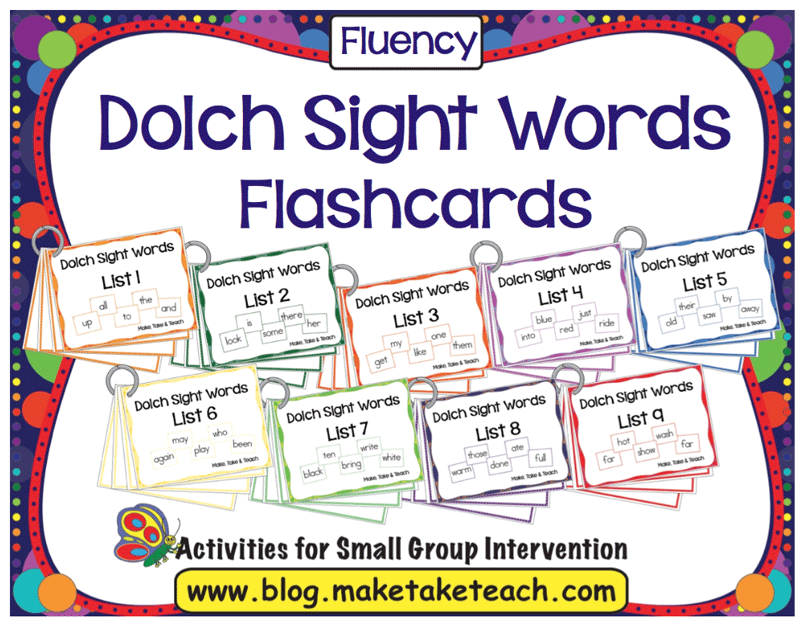 .. How high is the wall, how gloomy and impregnable the castle, how beautiful is the one sitting on throne ruler! Create a picture in your imagination, live the situation and the new vocabulary will be remembered easily and for a long time.
.. How high is the wall, how gloomy and impregnable the castle, how beautiful is the one sitting on throne ruler! Create a picture in your imagination, live the situation and the new vocabulary will be remembered easily and for a long time.
Tip 4: Learn in different contexts
The Law of Context: Information is easier to remember and recall when it is related to other simultaneous experiences. The context in which an event occurs is sometimes more important to remember than the event itself.
Our memory is associative. Therefore, try to change the place of preparation, for example, to learn different topics in different rooms (kitchen, bedroom), on the road (metro, car) and even at work (office, "negotiation"). Information is associated with the situation, the recollection of which will help to remember the content of the topic.
Tip 5: Learn more often, but less
Learning is like eating: it is better to absorb information in small parts, taking small breaks. It is better to learn a maximum of 10 objects (words or rule components) in one session. After that, you need to take a 15-minute break, otherwise the subsequent training will not be complete. Learn words in line, on the subway - impulse learning is much more effective than continuous learning.
It is better to learn a maximum of 10 objects (words or rule components) in one session. After that, you need to take a 15-minute break, otherwise the subsequent training will not be complete. Learn words in line, on the subway - impulse learning is much more effective than continuous learning.
Tip 6: Learn important information at the beginning and end
The law of the region, known to us from the film "Seventeen Moments of Spring": the information presented at the beginning and at the end is best remembered. It is more effective to learn especially difficult and intractable words at the beginning and at the end of a ten-minute session - this way they are better deposited in memory.
Tip 7: Use mnemonic techniques
When studying a word, it is useful to choose an associative anchor image, for example: clever (smart) - a smart cow eats clover. The image should be bright, understandable, perhaps absurd - unexpected associations fix the word well in memory.